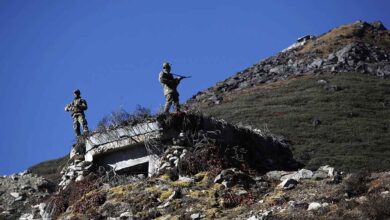South Korea counters North Korean threats with AI-based drones, robots

Felix Kim
Contesting North Korea’s asymmetric threats is the core aim of Defense Innovation 4.0 (DI 4.0), the latest technology-centered endeavor of the Republic of Korea (ROK) Ministry of National Defense (MND). The initiative accelerates the development of unmanned and manned defense systems that use artificial intelligence to enhance performance. New command structures will emerge from DI 4.0, including units devoted to drone operations and defense strategy.
“To overcome many future challenges, our military pursues innovative changes in defense with science and technology of the Fourth Industrial Revolution, which is our strength,” Vice Minister of National Defense Shin Beom-chul told the MND’s Defense Media Agency in March 2023. “We will design a unit structure that can reduce manpower while increasing combat efficiency and survivability by using advanced weapons such as AI-based drones and robots.” (Pictured: A prototype ROK attack drone.)
South Korea widely embraces the Fourth Industrial Revolution concept coined by German engineer and economist Klaus Schwab concerning the new wave of digital innovation.
According to the MND, the main objectives of DI 4.0 are to enable the ROK military to counter asymmetric threats such as North Korea’s nuclear and missile programs and to develop capabilities to fight and triumph on the battlefield.
The new drone operations command, expected to launch in 2023, will use compact drones for surveillance and, if necessary, combat. MND officials are studying operational examples of drones in other countries, including Turkey, whose Bayraktar combat drone was used successfully by Ukrainian forces after Russia’s invasion.
Enhanced drone capability has for years been a priority for Seoul and came to the forefront following a December 2022 incident involving the infiltration of ROK airspace by five North Korean surveillance drones.
The strategic command, projected to launch in 2024, aims to integrate the capabilities of each branch of the ROK military and lead development of response concepts and forces, MND reported.
“The command structure is to effectively control and reorganize cutting-edge forces suitable for commanding future combined and joint operations, and the unit structure is to create and reinforce new operational units such as manned and unmanned combined combat system units and space and cyberspace,” Shin said.
Seoul plans to devote more than 10% of its defense budget to research and design by 2027 and to concentrate the budget on 30 strategic defense technologies in 10 areas, including quantum computing, energy and hypersonic speed.
Fourth Industrial Revolution principles will be applied to the development of a new Joint All-Domain Command and Control (JADC2) system, the MND said. The JADC2 will interconnect the command, control, communication, computer and intelligence systems of each military branch, transforming them into an AI-based next-generation command and control system.
To bring defense personnel current with the new technologies, the MND also announced new education initiatives as part of DI 4.0. These include standardizing education and training management for the entire Army, a “scientific training center” to accumulate and utilize big data related to training, and a “comprehensive defense training center” to facilitate joint training.
“If service members do not have the knowledge and ability to utilize science and technology,” Shin said, “the application of advanced science and technology to the military is limited.”
IMAGE CREDIT: ROK MINISTRY OF NATIONAL DEFENSE




